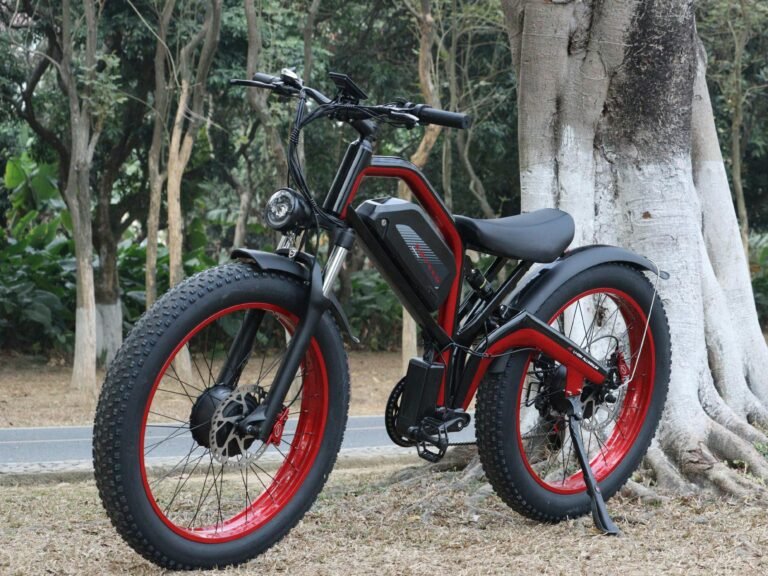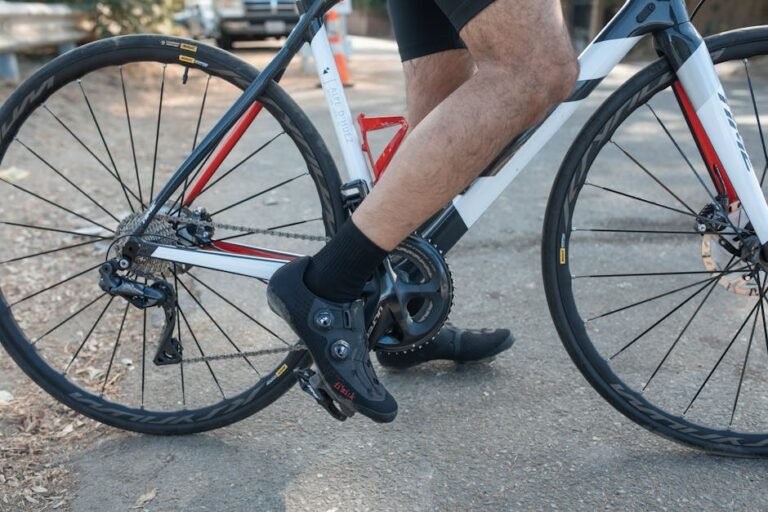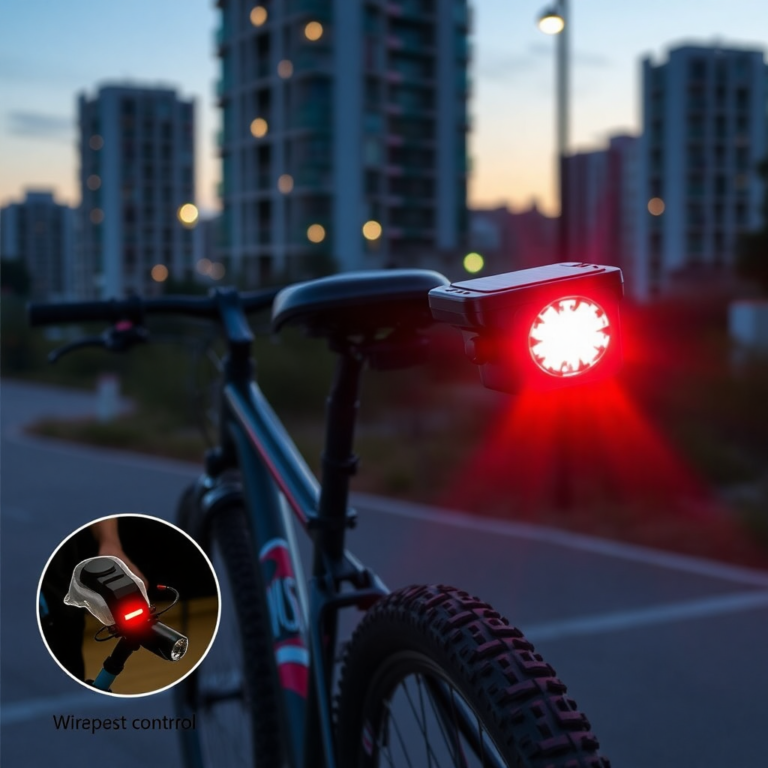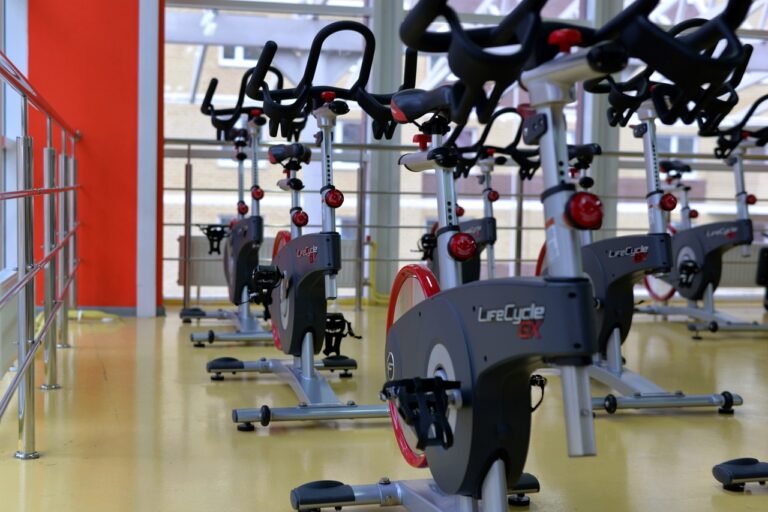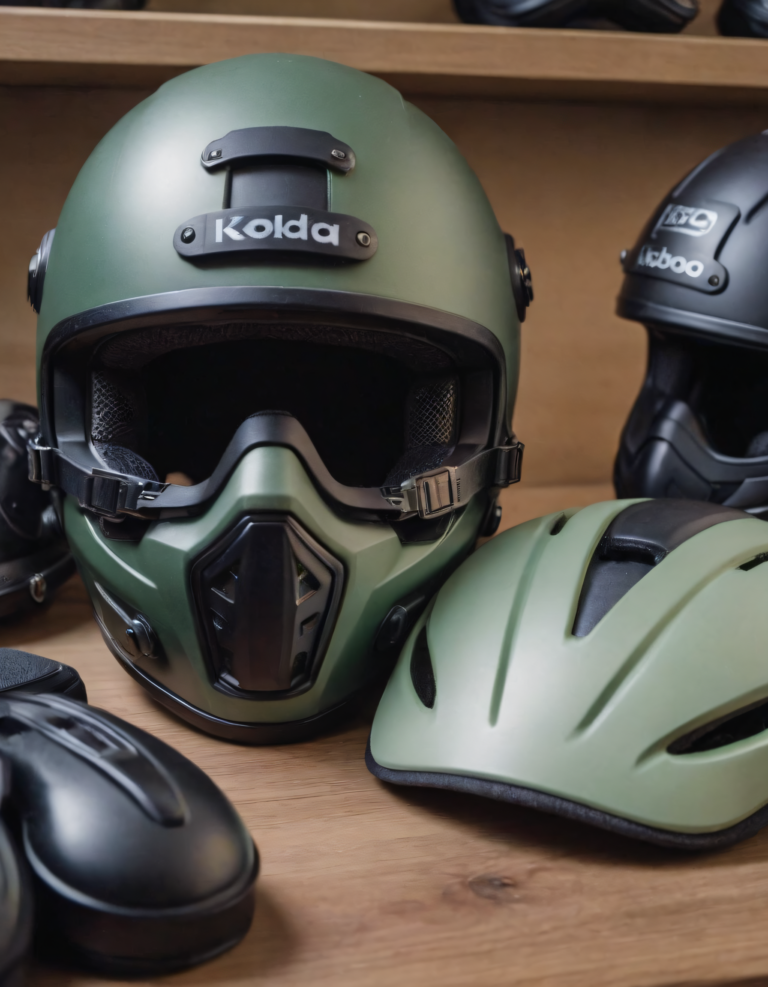Bicycle Security Masterclass: Protect Your Ride from Thieves in 2025
Bicycle theft is a nightmare for cyclists everywhere! Did you know that over 2 million bikes are stolen annually in the United States alone? I’ve been a cycling enthusiast for years, and I’ve learned that protecting your precious ride isn’t just about buying an expensive lock—it’s about having a comprehensive security strategy. In this comprehensive guide, I’ll walk you through everything you need to know to outsmart bike thieves and keep your two-wheeled companion safe and sound.
Choose the Right Lock: Your First Line of Defense for Bicycle Security
Let me tell you a story about the day I learned that bicycle security isn’t just about throwing a old lock on your bike. My brother borrowed my Moms bike to run a quick errand. Little did he know that he would be walking home. We both went out to search for it later but never found it.Yep, stolen – right in broad daylight.
My Painful Lesson in Bicycle Security
That devastating moment taught me something crucial: not all locks are created equal. we were using this flimsy cable lock that looked more like a fashion accessory than serious bicycle security.
Since then, I’ve become something of a lock enthusiast. I’ve researched, tested, and talked to every bike shop owner who’d listen about preventing bike theft. Here’s what I’ve learned about choosing the right lock to keep your two-wheeled friend safe.
U-Locks: The Fort Knox of Bicycle Locks
U-locks are basically the bodyguards of the bicycle security world. These rigid, hardened steel locks are designed to resist bolt cutters, leverage attacks, and serious theft attempts. Brands like Kryptonite and OnGuard have models that are basically Fort Knox for your bike.
Look for locks with Sold Secure ratings. These certifications aren’t just fancy stickers – they’re legit tests of a lock’s strength. A Gold-rated lock means it can withstand professional-level theft attempts for several minutes.
Chain Locks: Flexible Protection with Serious Muscle
Don’t discount chain locks in your bicycle security arsenal. Modern high-end chains are made with hardened steel links that can’t be easily cut with standard tools. I personally love the Abus CityChain 1060, which feels like you’re wrapping your bike in medieval armor.
A word of caution: Thickness matters. A skinny chain is basically an invitation to thieves. Aim for chains at least 10mm thick, preferably with a protective sleeve to prevent scratching your bike’s frame.
Folding Locks: The Ninja of Bicycle Security
Here’s a lock type that blew my mind: folding locks. They’re compact, relatively lightweight, and provide surprisingly robust protection. The ROCKBROS Smart Bluetooth Fingerprint Folding Bike Lock is my go-to recommendation. These locks fold up small enough to fit in a messenger bag but roll out to a formidable security barrier.
Practical Bicycle Security Tips
Let me drop some hard-earned wisdom about using these locks effectively:
- Always lock your bike through the frame AND at least one wheel, preferably to a solid, immovable object.
- Position the lock’s keyhole facing downward to make it harder for thieves to tamper with.
- In high-theft areas, consider using two different types of locks. Thieves hate extra complexity.

The “Two-Lock Strategy”
When possible use a U-lock for the frame and rear wheel, then a complementary chain or cable lock for the front wheel. It’s like creating multiple layers of protection that would make most bike thieves throw up their hands in frustration.
If you’re parking in a city, try to make your bike look less attractive than surrounding bikes. A few strategic scratches or some intentionally “meh” tape can make potential thieves look elsewhere.
Remember, no lock is 100% theft-proof. But with the right approach to bicycle security, you can make your bike such a challenging target that criminals will move on to easier pickings.
Master Secure Locking Strategies in Any Environment
The Urban Jungle: Navigating Bike Parking Challenges
Urban environments are like obstacle courses for bicycle security. Every parking spot feels like a potential trap, and not all racks are created equal. I’ve learned the hard way that where you lock your bike is just as important as how you lock it.
Choosing Your Bike Parking Battlefield
Look for bike racks that are:
- Well-lit
- In high-traffic areas
- Close to building entrances
- Near security cameras
Avoid those rickety, wobbly racks that look like they’ve survived multiple bike apocalypses. A solid, firmly anchored rack is your first line of defense in bicycle security.
The Art of Strategic Locking
Here’s my tried-and-true bicycle security method that’s saved me countless headaches:
- Frame First, Always: Your primary U-lock should always secure the bike frame to a solid, immovable object. I mean immovable – not those sad little street signs that can be easily lifted.
- Wheel Protection is Non-Negotiable: Quick-release wheels are basically theft magnets. I learned to always remove the front wheel and lock it alongside the frame. For those with through-axle bikes, this becomes even more critical.
- The Seat Saga: After my seat theft incident, I invested in a locking seat post clamp. These little devices make it impossible to remove your seat without special tools.
High-Risk Urban Survival Guide
Urban bicycle security is like a chess match. You’ve got to think three moves ahead. In high-risk areas, I recommend the double-lock method:
- One heavy-duty U-lock for the frame
- A secondary chain or cable lock for additional wheels or components
The “Belt and Suspenders” Approach
In super sketchy areas, I’ll go full paranoid mode. Two U-locks, a chain, maybe even a GPS tracker hidden somewhere on the bike. Overkill? Maybe. But I’d rather be the guy with too much security than the guy buying a new bike.
Bonus Urban Bicycle Security Tips
- Always lock to something that can’t be easily cut or lifted
- If possible, lock in a spot with natural surveillance
- Consider removing any easily detachable accessories when parking
Remember, bicycle security isn’t about being perfect. It’s about making your bike a less attractive target than the one next to it.
Protect Your Bike at Home: Storage Solutions That Deter Thieves
My bike is more than just a mode of transportation – it’s practically a member of the family. So when I had a close call with a potential home break-in, I realized home bicycle security isn’t just about fancy locks, but about smart, strategic storage.
Indoor Storage: Your First Line of Defense
Not everyone has a massive garage or dedicated bike room. But that doesn’t mean you’re defenseless. Indoor bicycle security is all about creativity and layered protection.
Apartment Storage Hacks
- Invest in a vertical wall mount that turns your bike into wall art
- Use heavy-duty anchor points near interior walls
- Consider a freestanding bike stand in a secure corner
- If you’re on an upper floor, store near a window with good visibility
Garage and Shed: The Fortress Approach
For those lucky enough to have extra space, your garage or shed can become a bicycle security stronghold. Here’s my battle-tested strategy:
- Permanent Anchoring: Install a heavy-duty ground anchor that can’t be easily removed.
- Multiple Lock Points: Never rely on just one lock. Layer your security with:
- U-locks
- Chain locks
- Cable locks
- Wheel locks
The Smart Home Security Integration
Modern bicycle security goes beyond traditional methods. I’ve rigged up a small motion sensor near my bike storage area that connects to my smartphone. It’s kinda like having a baby monitor for your bike.

Shared Living Space Survival Guide
Living with roommates or in a shared building? Bicycle security gets complicated. My tips:
- Designate a specific, agreed-upon storage zone
- Use personal locks that roommates can’t access
- Consider a bike cover to make your ride less tempting
- If possible, store in your personal room or a locked private area
Layered Protection: The Ultimate Bicycle Security Strategy
Think of home bicycle security like home defense. You want multiple barriers:
- Physical barriers (locks, anchors)
- Visual deterrents (covers, strategic placement)
- Electronic monitoring (motion sensors, smart alerts)
- Personal vigilance (regular checks, maintenance)
Additional Anchoring Systems Worth Investing In
- Ceiling-mounted pulley systems
- Wall-mounted vertical racks
- Floor-to-ceiling tension poles
- Heavy-duty ground anchors with multiple lock points
Advanced Security Devices and Technologies: The High-Tech Shield for Your Bike
The GPS Revolution in Bicycle Security
Remember when tracking your bike seemed like something out of a spy movie? Not anymore. GPS tracking has become a game-changer in bicycle security, and I’m here to tell you it’s worth every penny.
How GPS Tracking Actually Works
I installed my first GPS tracker after my theft incident, and it was like giving my bike a. These tiny devices can:
- Provide real-time location updates
- Send instant alerts if your bike moves
- Create virtual geo-fences
- Track battery life and movement patterns
Look for trackers with cellular and Bluetooth capabilities. The more connection options, the better your bicycle security.
Alarm Systems: The Bike’s Personal Security Guard
Modern bicycle security alarms are nothing short of impressive. These aren’t your grandpa’s simple motion sensors. We’re talking about high-decibel, attention-grabbing systems that make would-be thieves run for the hills.
Alarm Feature Breakdown
- 110+ decibel sound alerts
- Smartphone notifications
- Vibration and movement detection
- Some models with built-in GPS tracking
Unique Identification: Your Bike’s Digital Fingerprint
Etching and registration might sound old school, but they’re crucial in modern bicycle security. Here’s why:
- National Bike Registry: Creates a permanent record of your bike’s details
- Laser Etching: Permanent identification that can’t be easily removed
- QR Code Tagging: Modern solution that links to your personal information
My Personal Identification Strategy
- Laser etch my frame with a unique identifier
- Register with local and national bike registries
- Take detailed photos of my bike’s serial number
- Keep maintenance records as additional proof of ownership
Smart Lock Technologies: The Future is Now
Forget traditional locks. We’re entering an era of bicycle security that feels like science fiction. Smart locks now offer:
- Bluetooth connectivity
- Keyless entry
- Automatic locking/unlocking
- Tamper detection
- Shared access capabilities
Imagine unlocking your bike with your smartphone or getting an instant notification if someone tries to mess with your lock. Welcome to the future of bicycle security.

Wireless and App-Connected Solutions
The integration of smartphone apps with bicycle security is transforming how we protect our rides. Some mind-blowing features include:
- Remote lock/unlock capabilities
- Theft detection algorithms
- Community-based tracking networks
- Maintenance tracking and alerts
The Human Element in High-Tech Security
Here’s the reality check. No technology is 100% foolproof. The best bicycle security combines smart tech with old-fashioned vigilance. These devices are tools, not magical force fields.
My Cyclist’s Wisdom
- Choose quality over quantity
- Keep your tech updated
- Don’t rely solely on technology
- Stay aware of your surroundings
Bicycle security has evolved from simple locks to complex, interconnected systems. Embrace the technology, but never forget that your awareness is still the most important security feature.
Psychological Deterrence: Making Your Bike a Hard Target
The Thief’s Mental Calculus
Here’s a brutal truth about bicycle security: Thieves are opportunists. They’re constantly doing a quick mental risk assessment. Your job is to make that assessment feel like more trouble than it’s worth.
The 30-Second Decision Window
Most bike thieves make their decision in less than half a minute. They’re looking for:
- Easy targets
- Quick getaway potential
- Minimal resistance
- Low-risk opportunities
Your mission became simple: Transform your bike from an easy mark to a nightmare scenario for potential thieves.
Understanding Thief Psychology
Bike thieves are essentially doing a quick cost-benefit analysis. They want:
- Quick theft
- Minimal attention
- Easy resale potential
- Low risk of getting caught
Your bicycle security goal is to disrupt every single one of those preferences.
Situational Awareness Tactics
Being aware isn’t just about watching your bike – it’s about understanding your environment:
- Park in well-lit areas
- Choose locations with natural surveillance
- Avoid isolated parking spots
- Position your bike strategically
Practical Psychological Deterrence Checklist
- Make your bike look less valuable
- Create visible, complex locking scenarios
- Use multiple deterrence layers
- Develop situational awareness
- Think like a potential thief
The Mental Game of Bicycle Security
Remember, bicycle security is 50% physical protection, 50% psychological warfare. You’re not just protecting a bike – you’re creating a mental barrier that most opportunistic thieves won’t cross.
Confidence is your best accessory. Walk like you know exactly what you’re doing, and most potential thieves will look elsewhere.
Bicycle security isn’t about being perfect. It’s about being smarter, more prepared, and more strategic than the average opportunistic thief.
Final Thoughts
Protecting your bicycle isn’t just about hardware—it’s about implementing a holistic security strategy. By combining robust locks, smart storage, advanced technologies, and psychological deterrence, you can significantly reduce the risk of bike theft. Remember, a few proactive steps today can save you from the heartache of losing your beloved bicycle tomorrow. Stay vigilant, stay prepared, and ride with confidence!
Find More Resources on Bicycles
- Smart Bike Trainers: 2024 Best Picks with Features and Benefits
- How to Improve Cycling Endurance in 2025: 5 Proven Strategies for Cyclists
- Bicycle Chain Maintenance: 2025 How to Clean and Lube Guide
- How Do You Adjust Bike Brakes? A Step-by-Step Guide for 2024
- Essential Mountain Bike Gear: A Complete Guide for 2024



